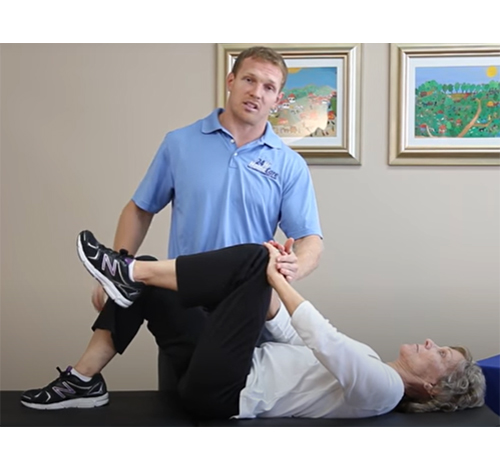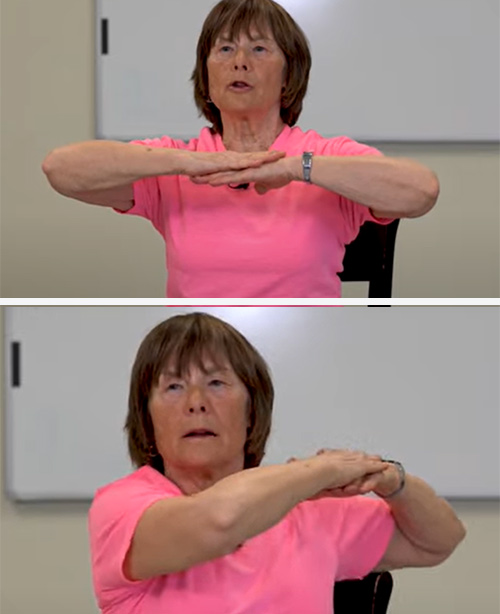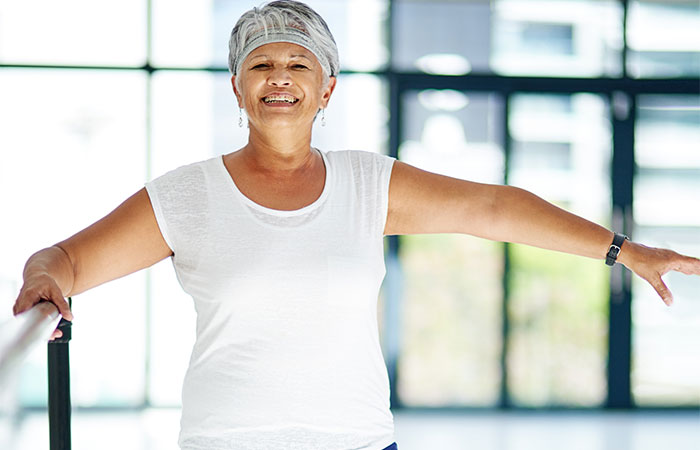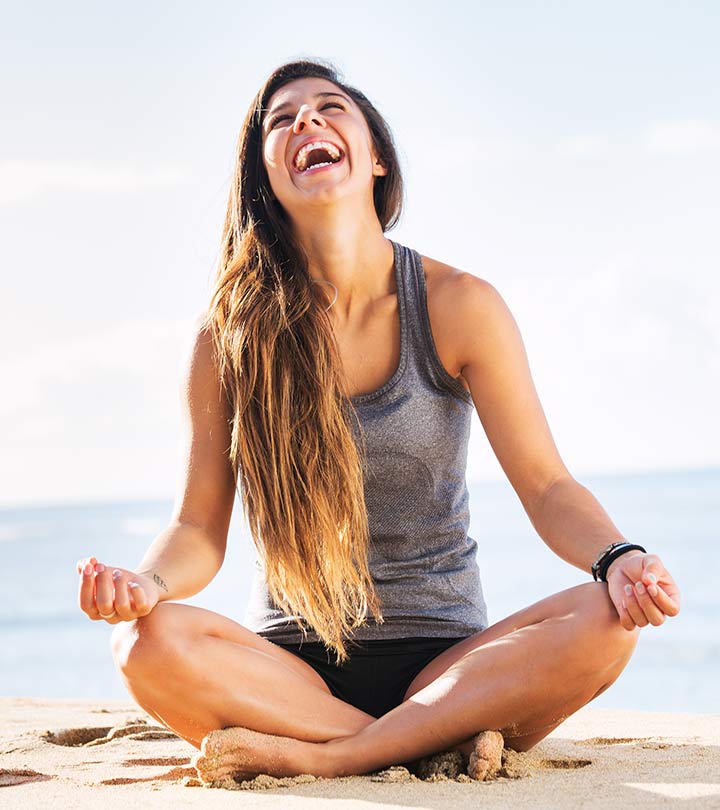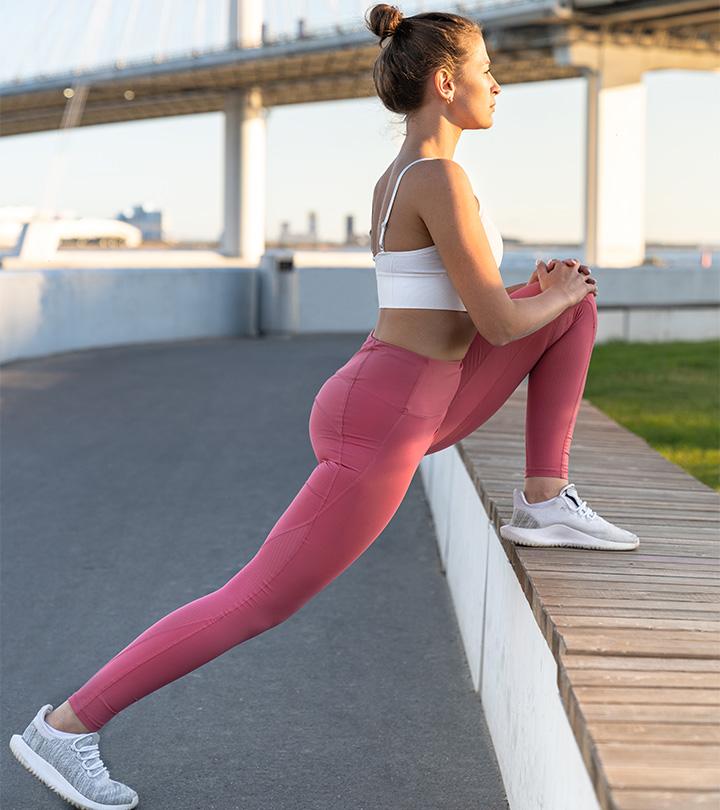10 Best Core Exercises For Seniors To Improve Stability
Because building strength and balance is always possible no matter your age.

Image: YouTube
Fitness is ageless. However, our bodies cannot escape the signs of aging that manifest as muscle weakness and reduced bone strength, affecting balance, coordination, and gait (1), (2). Core exercises for seniors can improve stability and help you stay fit.
“A strong, functional core aids in the very basics like good breathing and posture. Good seated and standing posture keeps the center of mass where it needs to be, helping to prevent falls,” says Michael Julom, ACE-CPT, CFL1 Trainer. He adds, “Everyday activities people do late into life, such as getting out of bed and putting away the dishes, depend, at least in part, on core muscles.”
In the context of core exercises that improve stability, a study conducted on 1,012 survey participants found that around 72.5% of women who are 65 or older perform balancing exercises, such as standing on their feet, compared to 62.5% of men in the same category. In addition, it also found differences in participation based on level of education, gender, income, and body mass index (BMI) category.
In other words, you need to strengthen your core muscles to lead a healthy life. So, grab a chair, a therapy band, and a mat to do these 10 best core strengthening exercises for mature adults over 50. Let’s begin!
In This Article
What Is The Core?
We often refer to the ab muscles as the core. However, the core muscles are the boundary to separate the organs between the diaphragm and pelvic area. ACE-CPT, CFL1 Trainer Michael Julom explains, “The core refers to the system of muscles that surround the midsection, both in front and back. The core contributes to the structure and strength of the torso and helps protect the abdominal organs. It has been referred to as the second spine.”
He adds, “Muscles of the core include the rectus abdominis (aka “the abs,” which make up the washboard appearance when they’re developed), the transverse abdominisi XA group of muscles located on the lateral side of the abdomen, including the internal and external obliques. Osteoporosis: A medical condition that renders the bones frail and brittle, primarily caused by old age, hormonal imbalances, or nutrient deficiencies. , the internal and external obliques, the spinus erectorsi XDeep lateral muscles at the back that are responsible for flexibility and movement of the spine. , and the multifidus and muscles deep inside the pelvis,” he says.
It is crucial to keep your core strong for many reasons. Scroll down to find out.
Why Do We Need To Strengthen The Core?
Without a strong core, performing day-to-day tasks like lifting objects, walking, and standing up is tough. This increases the risk of falls, and you may need assistance to do any of the regular tasks. Conditions like osteoporosis, muscle loss, and knee and back pain may worsen it further. That is why it is best to do a few exercises every day to keep your core strong.
It is also important to find physical activities or exercises that align with your lifestyle. Linda, an exceptional 75-year-old blogger, shares about her physical health, saying, “I’m trying to build a routine or regimen where I do the weights/workouts videos in the morning, yard work after lunch, and yoga stretches in the late afternoon (i).”
 Quick Tip
Quick TipBelow, you will find 10 low-impact core exercises designed for mature adults. You can do them at home with or without assistance.
Note: Talk to your doctor before exercising and do a 10-minute warm-up.
10 Core Exercises For Seniors (With Pictures)
1. Marching In Place

How To Do
- Lie down on a mat or a flat surface.
- Flex your knees and place your feet flat on the floor. Rest the hands by your side or on your upper belly and look at the ceiling.
- This is the starting position.
- Lift your right leg off the floor. Flex the knee so that your lower leg and thigh are at 90° to each other.
- Bring your knee right above your pelvis.
- Place your foot back on the mat.
- Repeat with the left foot.
- Do this 10-15 times.
2. March With Leg Extension
How To Do
- Lie down on a mat or a flat surface.
- Flex your knees and place your feet flat on the floor. Rest the hands by your side or on your upper belly and look at the ceiling.
- This is the starting position.
- Lift your right leg off the floor and flex the knee so that your lower leg and thigh are at 90° to each other.
- Bring your knee right above your pelvis and extend the leg.
- Pause for a moment.
- Bring your leg back to the flexed position and put your foot back on the mat.
- Repeat with the left foot.
- Do this 10-15 times.
3. Isometric Core Strengthening
How To Do
- Lie down on the mat, flex your knees, and keep your feet flat on the floor.
- Lift your right leg off the floor and bring the knee right above your pelvis.
- Place your right palm on the right thigh.
- Press your palm and push your thigh against your palm.
- Hold for 3 seconds and release.
- Put your foot down on the floor.
- Repeat with the left foot.
- Do this 10 times.
4. Resistance Band Leg Kicks
How To Do
- Grab a resistance band and tie a loop at one end.
- Hold the other end with your right hand, wrap the loop around the right leg, and get on all fours.
- Keep your elbows right below your shoulder and tighten the abs and glutes.
- Lift your right leg off the floor and extend it, with the toe touching the floor. This is the starting position.
- Raise your right foot off the floor until your leg and spine are in the same line.
- Lower your foot down.
- Just before it touches the floor, lift it again.
- Do this 10 times before switching legs.
5. Sitting Oblique Twists
How To Do
- Sit on a chair with the spine straight. Roll the shoulders back, rest the hands on your thighs, and look ahead.
- Bring your hands together in front of your chest, keeping the elbows out. This is the starting position.
- Look straight and turn your upper body to the right and then to the left.
- Do this 10-15 times.
6. Seated Side Bends
How To Do
- Sit on a chair, keep the feet shoulder-width apart, and hands open to the side. Straighten the spine and look ahead. This is the starting position.
- Bend to the right and try to touch the floor with your right hand.
- Get back up and bend to the left.
- Do this 12 times.
7. Seated Forward Bends
How To Do
- Sit on a chair, keep your feet wider than shoulder-width apart, and the spine straight. Rest the palms on the knees, roll the shoulders back, and look straight. This is the starting position.
- Hinge from the waist, bend forward, and try to touch the floor with your hands.
- Hold the position for 5 seconds and get up.
- Do this 10 times.
8. Bird Dog
How To Do
- Get on all fours on a mat. Engage your core, and keep your spine, neck, and head aligned.
- First, lift your left leg off the floor and stretch it behind.
- Lift your right hand off the floor and extend it.
- Hold this position for 5-10 seconds.
- Get back to the starting position.
- Lift your right leg and stretch it behind you.
- Lift your left hand off the floor and extend it.
- Hold this position for 5-10 seconds.
- Repeat this set 3 times.
9. Lying Ankle Taps
How To Do
- Lie down on a mat, flex your knees, and keep your feet flat on the floor.
- Rest your hands by your sides and lift your neck slightly off the floor.
- Bend to your right and try to touch the right ankle with your right hand.
- Return to the starting position.
- Bend to the left and try to touch the left ankle with the left hand.
- Do this 12 times.
10. Plank
How To Do
- Get on all fours. Flex your elbows and place them on the floor.
- Stretch both the legs behind, one at a time, with the toes touching the floor.
- Support your body on your elbows and toes.
- Engage the core and glutes.
- Keep breathing and hold this position for 10-30 seconds.
- Relax for 30 seconds and repeat two more times.
These core strengthening exercises can improve trunk stabilization and balance. However, aging may cause a host of other problems and restrict your functional movements. Exercising could be tough in such cases, and your doctor may advise avoiding certain movements. Back pain is a common aging problem, and you have to be careful while doing core strengthening exercises. Scroll down to get a better idea.
Can I Do Core Exercises With Back Pain?
Yes, you can do core exercises with back pain, and even low-impact workouts like seated or lying exercises, but avoid planks and leg back kicks unless you have a personal trainer to help you with your posture, or you have practiced enough to ensure you are protecting your back with your core muscles. You must also avoid lifting heavy weights or objects without proper engagement of the core.
 Quick Tip
Quick TipSeniors can improve their core strength and stability by doing exercises in standing posture. Check out some of these options in the next section.
Standing Core Exercises For Seniors
- Standing March
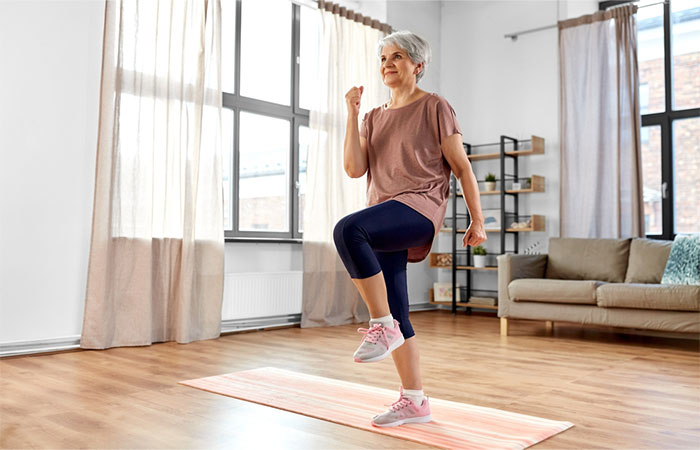
Lift your knees as high as you can while marching in place. This engages the core and helps improve balance.
- Standing Leg Lifts
Stand next to a chair or wall for support. Lift one leg to the side while keeping it straight. Repeat on the other side.
- Toe Taps
Stand in front of a step with your feet positioned hip-width apart. Tap the step with one foot and bring it down. Repeat with the other foot and keep alternating between both feet. This exercise engages the lower abdominal muscles.
Remember to start slowly and gradually increase the intensity. Consult a healthcare professional if you feel back discomfort.
Apart from protecting your back, you must follow other precautions while doing core stability exercises. Here’s what to keep in mind.
Precautions To Take
- Avoid fast and jerky movements and exercises.
- Avoid lifting heavy objects without properly engaging the core.
- Practice good sitting and standing postures.
- Make sure the chair is stable and sturdy for chair exercises.
The Takeaway
Keeping yourself fit and going has nothing to do with age. Staying active helps you feel and look better than ever – and core strengthening exercises can help you achieve that goal and stay fit after 50. The exercises mentioned here are low-impact and activate the core muscles without aggravating an underlying condition or a past injury. Do these for 15-20 minutes every day, and you will start to notice a difference in your gait, posture, agility, flexibility, and energy levels. However, ensure to consult a doctor, take assistance (if required), and follow all precautions to prevent accidental injuries.
Frequently Asked Questions
What exercise burns the most belly fat at home for seniors?
Aerobic exercisesi XAlso called Cardio, a group of exercises that focus on oxygen intake to target heart and blood health. , under the supervision of a trainer instructor or expert, may help the elderly lose belly fat at home. Certain aerobic exercises are easy on the joints and provide an overall workout.
Does walking flatten your stomach?
Walking may help to lose belly fat (3). However, it must be combined with a healthy diet too.
What are some additional exercises suitable for senior fitness?
Seniors can try low-impact strength training exercises, flexibility training, and balance exercises. Yoga for seniors is also a great way to improve overall well-being.
Does walking strengthen your core muscles?
Although it is not frequently regarded as a primary exercise for strengthening the core, walking can help to engage and strengthen the core muscles to some extent.
How often should a 70-year-old exercise?
According to the Centers for Disease Control and Prevention, adults aged 65 or older need at least 150 minutes a week of moderate-intensity workouts or 75 minutes a week of vigorous training (4).
How can seniors flatten their stomachs?
Including planks, sit-ups, or cardiovascular exercises like walking, swimming, and eating a balanced diet may help seniors flatten their stomachs.
How can seniors rebuild muscle?
By incorporating strength training exercises like resistance band workouts or bodyweight exercises in their routine, seniors can rebuild their muscles.
What should seniors do if they experience pain during or after core exercises?
Seniors who experience discomfort while or after performing core exercises should stop what they are doing and talk to their doctor about their problem and how to change their exercise routine to avoid further injury.
Key Takeaways
- Inadequate core strength increases the risk of falls and can worsen conditions like osteoporosis, knee and back pain and muscle loss.
- You can do simple exercises, like marching in place, sitting oblique twists, and side bends to help strengthen your core muscles in an effective and safe manner.
- You can do core exercises if you have back pain, but you should only do them while being seated or lying down.
- You should also avoid planks and leg back kicks if you don’t have a personal trainer to help you correct your posture.
- While doing core exercises, you should avoid fast and jerky movements and lifting heavy weights without properly involving your core.
Learn how you can strengthen your core, no matter your age, with some simple seated exercises. Disocver how to stay healthy with this easy-to-follow workout that will leave agile and fit! Check out the video below now.
Personal Experience: Source
StyleCraze's articles are interwoven with authentic personal narratives that provide depth and resonance to our content. Below are the sources of the personal accounts referenced in this article.
i. ‘Seniors’ Exercisehttps://creativeartworksblog.wordpress.com/2022/04/11/seniors-exercise/
References
Articles on StyleCraze are backed by verified information from peer-reviewed and academic research papers, reputed organizations, research institutions, and medical associations to ensure accuracy and relevance. Read our editorial policy to learn more.
- Muscle weakness in the elderly: role of sarcopenia dynapenia and possibilities for rehabilitation
https://eurapa.biomedcentral.com/articles/10.1007/s11556-012-0102-8 - Aging and bone loss: new insights for the clinician
https://pubmed.ncbi.nlm.nih.gov/22870496/ - Is the goal of 12,000 steps per day sufficient for improving body composition and metabolic syndrome? The necessity of combining exercise intensity: a randomized controlled trial
https://www.ncbi.nlm.nih.gov/pmc/articles/PMC6724241/ - How much physical activity do older adults need?
https://www.cdc.gov/physicalactivity/basics/older_adults/index.htm






